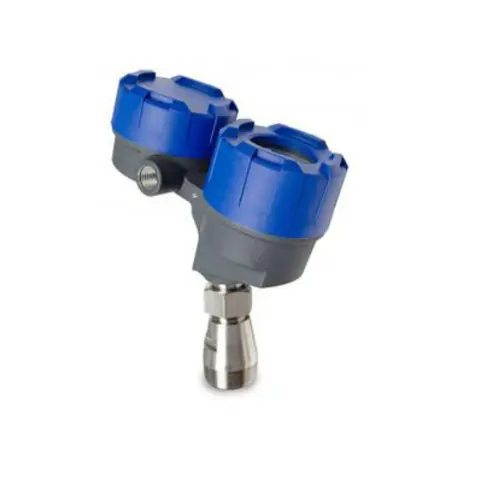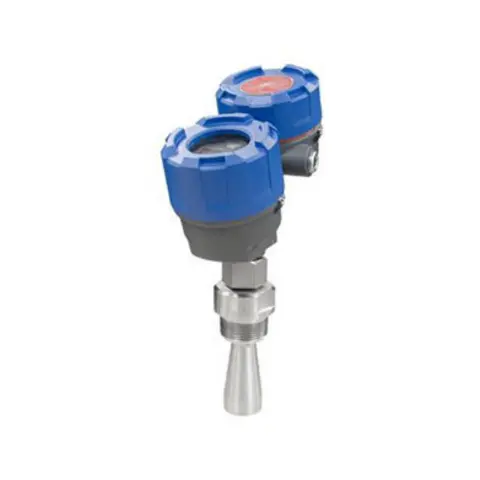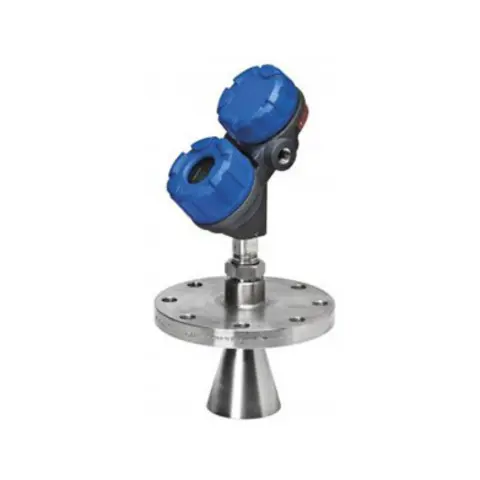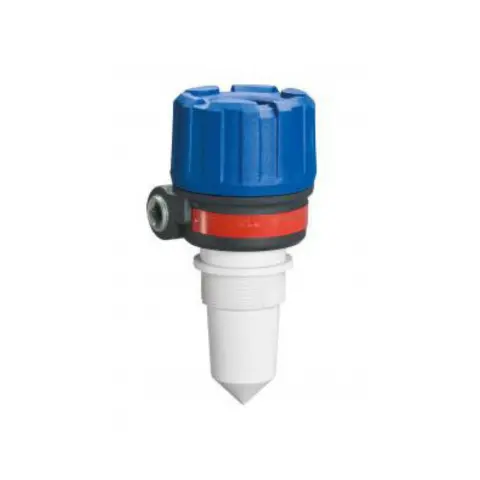Magnetostrictive Level Transmitters
Non-Contact Radar
Non-Contact Radar level transmitters are offered with various operating frequencies, each having their own advantages.
- 6 GHz transmitters were the first on the market starting in the early 1990’s. The lower frequency and longer wavelength make the transmitters more suitable for applications having foam or vapors.
- 26 GHz transmitters followed; and, are considered to be the go-to product that can accommodate the majority of all Non-Contact Radar applications.
- Now, high frequency 80 GHz transmitters, with a very short wavelength and small beam angles, are available for those applications having internal obstructions or space limitations.
The level value is then developed by factoring in tank height and other configuration information. The exact reference point for distance and level calculations is the sensor reference point – the bottom of an NPT thread, top of a BSP thread, or face of a flange.
There are two types of industrial Non-Contact Radar transmitters:
- Pulse Burst Radar
- Frequency Modulated Continuous Wave (FMCW)
Pulse Burst Radar
Pulse Burst Radar transmitters, the older of the two types, emit short bursts of energy to a liquid surface, and incorporate ultra-high-speed timing circuitry to measure the time of the return signal reflected off the liquid surface. Distance is then calculated utilizing the equation:
Distance = C x Transit Time/2, (where C = Speed of Light)
Frequency Modulated Continuous Wave (FMCW) Radar
FMCW devices transmit a continuous signal with a constantly changing frequency down toward the liquid. The detected difference in frequencies between the transmitted signal and return echo is proportion to the distance.
Benefits
- FMCW captures its process variable information in the frequency domain, which supports more accurate signal conversion.
- FMCW utilizes higher receiving sensitivity and higher-strength signals over pulse systems, allowing it to perform better in difficult situations where there may be turbulence, foam or excessive vapors. A higher operating frequency (80 GHz) means a smaller wavelength; which, in turn, results in better resolution, smaller antennas, and a smaller beam angle.
Regardless of whether the transmitter operates with Pulse Burst or FMCW, the level value itself is then developed by factoring in tank height and other configuration information. The exact reference point for distance and level calculations is the sensor reference point – which is typically the bottom of an NPT thread, top of a BSP thread, or face of a flange.





